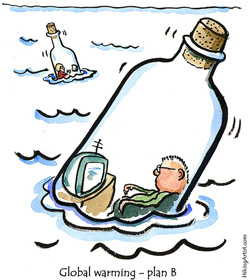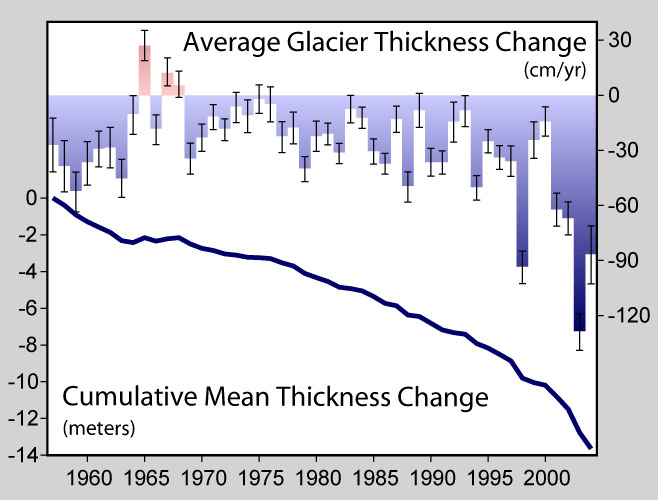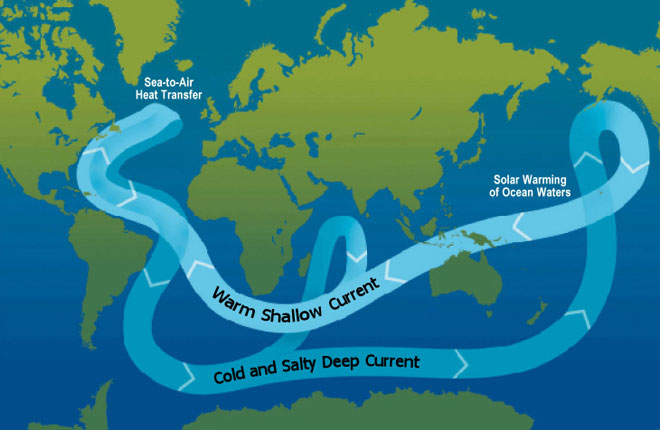Lesson Template
Part 1 - TEKS Glossary and Syllabus
- Lesson title: Drawing Conclusions Based on the Sufficiency and Strength of Research
- Student-friendly summary of lesson: You will be able to determine whether an argument has enough evidence and whether the evidence is credible.
- At least 3-5 key words in the lesson, including their definitions from the TEKS Glossary:
Key Word |
TEKS Glossary Definition |
|---|---|
| Context | The background or circumstances of various settings and/or time periods in texts. |
| Drawing conclusions | A form of inference in which the reader gathers information, considers the general thoughts or ideas that emerge from the information, and comes to a decision. The conclusion is generally based on more than one piece of information.
|
| Loaded term | A term or phrase that has strong emotional overtones and that is meant to evoke strong reactions beyond the specific meaning (e.g., “tax relief” instead of “tax cut” or death tax instead of estate tax).
|
| Parody | A work created to make fun of or spoof an original work. A visual parody, for example, would be Marcel Duchamp’s addition of a mustache to the Mona Lisa. Jonathan Swift’s “A Modest Proposal” is an example of textual parody (in which he proposes that the Irish eat children to solve the problem of starvation).
|
| Reliable source | A credible or believable source. Some questions to evaluate credibility might be: Is the author a respected authority on the subject? Does the author support opinions with strong argumentation and reasoning? How current is the information? |
| Valid source | A correct and truthful source. Some questions useful for evaluating validity of a source might be: Does the author present facts with supporting evidence? Does the information in this source match information in other sources?
|
Part 3 - Sections of the Lesson
Add any documents/downloads within each section and/or any suggestions regarding interactive enhancement components.
Lesson Section |
Title of Section |
Downloadable Document |
Activity/Enhancement |
|---|---|---|---|
| 1 | Introduction | Monty Python Video Clip; Don Wright Cartoon | |
| 2 | Evaluating Sources | ||
| 3 | Analyzing Pro and Con Arguments on Climate Change | Global Warming Cartoon; National Geographic Video Clip—“Global Warming 101” | |
| 4 | Deconstructing Video Clips on Climate Change | “Truth About Climate Change” Video Clip; "Watch This Before You Vote—Climate Change” Video Clip |
Part 4
Introduction
In this world where the Internet provides instant access to the information we seek, we need to learn how to evaluate an argument before we decide whether we should be convinced by it. In fact, we first need to know what an argument is.
The Greek philosopher Zeno said, “Rhetoric is an open palm,” meaning that argument is conversation, an open-minded discussion about multifaceted issues that rarely have simple solutions. Too often we stop talking to others we disagree with, or we turn the discussion into a fight. This video clip of a Monty Python skit illustrates how not to argue.
Though this skit is a parody of an argument, it shows the dangers of arguing irresponsibly.
A good argument:
- Contains a valid source or is written by a reliable, credible author.
- Uses neutral language rather than loaded words to create a tone of moderation, respectfulness, and good will.
- Offers a body of evidence (statistics, charts, graphs, photographs, expert testimony, government documents, websites, etc.) that clearly and sufficiently supports the main idea and is recent enough to still be relevant.
- Acknowledges other viewpoints fairly.
The more we learn about how arguments work, the less likely we are to succumb to arguments lacking accuracy, relevancy, development, or that take evidence out of context. As we grapple with major issues of our times such as climate change, immigration policies, and health care reform, we need to put aside our political differences and make sure that we use the best sources of information. The following cartoon by Don Wright illustrates how too many people today draw conclusions from sources that are not always credible or that don’t even exist.

The activities in this lesson will help you focus on the important features of arguments, especially on the writer (or the source) and the evidence the writer provides. That way, you can more accurately decide if an argument is valid and reliable.
Be aware that parody can also be used to form an argument, as demonstrated by this fake news article from
The Onion.
Wikipedia Celebrates 750 Years of American Independence (July 26, 2006)
NEW YORK—Wikipedia, the online, reader-edited encyclopedia, honored the 750th anniversary of American Independence on July 25 with a special featured section on its main page Tuesday.
“It would have been a major oversight to ignore this portentous anniversary,” said Wikipedia founder Jimmy Wales, whose site now boasts over 4,300,000 articles in multiple languages, over one-quarter of which are in English, including 11,000 concerning popular toys of the 1980s alone. “At 750 years, the U.S. is by far the world’s oldest surviving democracy, and is certainly deserving of our recognition," Wales said. “According to our database, that’s 212 years older than the Eiffel Tower, 347 years older than the earliest-known woolly-mammoth fossil, and a full 493 years older than the microwave oven.”
“In fact," added Wales, “at three-quarters of a millennium, the USA has been around almost as long as technology.”

This excerpt argues in an exaggerated, humorous way that Wikipedia may not be the most credible or valid source. The Onion is an American news satire organization. It is an entertainment newspaper and a website featuring satirical articles that report on international, national, and local news. It also has a non-satirical entertainment section known as The A.V. Club.
Evaluating Sources
In the following scenarios, consider the authority of each source before deciding whether or not to use it. Choose the source most likely to have accurate, detailed, up-to-date information for each situation. Write your responses using your Take Notes Tool. When are finished, check your understanding to see how you did.
- You are trying to decide which college will be the best bargain for the money. You should consult:
a. brochures from the colleges you think you might attend.
b. the College Board’s website for a comparison of colleges and universities.
c. a student currently enrolled at your top choice college. - Your mother wants reliable, current information on the gas mileage of compact cars. Her best resource is:
a. a report in Autoweek magazine.
b. a commercial on television for a car she likes.
c. an article in Reader’s Digest. - You need information on anorexia for a research paper you’re writing in your psychology class. You will find the best information in:
a. an article on dieting in Seventeen magazine.
b. an article titled “A Genetic Link to Anorexia” in Monitor on Psychology.
c. an encyclopedia entry on anorexia. - You are worried about a friend’s obsession with playing violent video games. To gain an in-depth understanding of the issue, you could consult:
a. a Washington Post newspaper article—“Dissecting Columbine’s Cult of the Athlete.”
b. a CBS Evening News report on the relationship between video games and violence.
c. an article about video games and violence on the GameSpot website. - Your history teacher assigns you to write a research paper on the “History of the Use and Abuse of Presidential Power.” The best source is:
a. a book written by former First Lady Rosalynn Carter.
b. a CNN news report on the current administration.
c. a book written by a University of Kansas professor of public administration.
- Correct Answer: B.
Answers A and C would not provide enough objective information.
- Correct answer: A.
Answer B would be biased and offer incomplete information; C would be insufficient and possibly outdated, because Reader’s Digest only prints excerpts and not always in a timely manner.
- Correct answer: B.
Answer A would likely encourage girls to eat less, particularly those already tending towards anorexia; C would contain common knowledge, not helpful evidence.
- Correct answer: A.
Answer B wouldn’t offer enough in-depth information due to its time limits; C would be a biased resource and wouldn’t discuss the connection between violence and video games objectively.
- Correct answer: C.
Answer A would be a biased and limited report; B would be too superficial and limited in scope.
Close
Analyzing Arguments on Climate Change
 Image by Fritz Ahlefeldt-Laurvig, 2009
Image by Fritz Ahlefeldt-Laurvig, 2009 The excerpt below and the graphic organizer (which you will open later) deal with the current issue of climate change. Read each piece carefully, and answer the questions that follow.
(Note: If you need to know more about the topic of climate change, watch the informative three-minute video made by National Geographic titled “Global Warming 101.” It covers definitions, scientists’ beliefs, evidence, effects of climate change, and recommendations for consumers.
Feb. 17, 2010, article “The Way to Save the Earth”:
The effects of global warming have spread to all continents of the world. Drought, desertification and sands are advancing on one front, while on another front, torrential floods and huge
storms the likes of which only used to be seen once every few decades now reoccur every few years. . . .
. . . In the same year in which [James E.] Hansen, NASA’s senior expert, confirmed the seriousness of global warming, 140,000 died and 24 million were displaced in floods in Bangladesh alone . . .
Many senior capitalists are characterized by wickedness and hardheartedness, and thus they don’t care about the human disasters caused by their economic activities. Words, conferences and demonstrations are of no use with such people. Hansen spoke out and warned Americans about the seriousness of global warming in 1988, but they didn’t respond to him. . . .
. . . The policies of the world today are not being steered with the power of superior intellects to serve the interest of the people; but rather, with the power of the motivation and greed of oil-robbers and warmongers, the beasts of predatory capitalism. Noam Chomsky was right when he pointed to a similarity between American policies and the policies of Mafia gangs. . . .
. . . Factories’ emissions stop when the factories stop, and the way to achieve their stoppage is easy, simple and in your hands. The wheel of the American economy is like a bicycle wheel: if it loses one link in its chain, it stops moving. . . .
. . . There must be accounting and punishment for those who head the major corporations and their political proxies, so that they stop their harmful actions against humanity . . .

Let’s do the first excerpt together so that you’re all set to fill out the graphic organizer in the next exercise. Read the questions below and answer them using your Take Notes Tool. When you’re finished, check your understanding.
- Give an example of evidence used in the excerpt. Remember, evidence can be statistics, charts, graphs, photographs, expert testimony, government documents, websites, etc.
- Who are the two experts referred to in the article?
- What three loaded terms appear in the excerpt? (You will probably find more than are listed in the answer.)
- When was the article published?
- Does the author believe in global warming or not? What other issue is being argued?
- The name of the author was deliberately omitted so that you would read the excerpt more objectively. The author is Osama Bin Laden, Commander of Al Qaeda and suspected mastermind of the Sept. 11, 2001 attacks. What do you think about the validity of this source now?
- Suggested answers:
- “effects of global warming . . . drought, etc.”
- “140,000 died and 24 million . . .”
- “Hansen spoke out . . . in 1988”
- “Noam Chomsky was right . . . ”
- “factories’ emissions stop when the factories stop”
- Hansen, Chomsky
- capitalists, wickedness, hardheartedness, don’t care about…human disasters, oil-robbers, warmongers, beasts of predatory capitalism, mafia gangs, proxies
- February 17, 2010
- He seems to believe in global warming. But he’s more concerned with capitalism and its leaders.
- It is hard to take Bin Laden seriously when he speaks of deaths in Bangladesh, for example. Also, he isn’t quoting Hansen or Chomsky directly and may be taking their words out of context. He is using global warming as a means of attacking Western society’s economic system and isn’t really concerned with the environment or humankind. It’s extremely unlikely that he’s an expert on climate change.
Close
For the next exercise, open the PDF. The PDF contains two more excerpts about global warming. Follow the instructions provided. You can type your answers into the PDF or download it, print it, and hand write your answers. Return to the lesson when you are finished.

Deconstructing Video Clips on Climate Change
In addition to reading arguments in print, you will probably listen to, view, and evaluate the credibility of news reports and documentary films. Once again, remind yourself of the elements of a good argument as you begin to determine validity and reliability.
A good argument:
- Contains a valid source or is written by a reliable, credible author.
- Uses neutral language rather than loaded words to create a tone of moderation, respectfulness, and good will.
- Offers a body of evidence (statistics, charts, graphs, photographs, expert testimony, government documents, websites, etc.) that clearly and sufficiently supports the main idea and is recent enough to still be relevant.
- Acknowledges other viewpoints fairly.
Sometimes you won’t have a written text to review and reconsider when evaluating a source. If you’re watching a video, for example, it might be helpful to make a checklist of what a good argument does and then refer to it during your evaluation. The next activity provides good listening and viewing practices for these kinds of situations.
Watch the two video clips below, and then answer the questions that follow using your Take Notes Tool. If you haven’t already, you might want to watch the video “Global Warming 101.”
Video #1:
Rachel Pike, a PhD candidate at Cambridge University, conducts research on isoprene, a major biofuel crop emission molecule. Her research represents a major step toward a complete picture of how human activity affects the global ecosystem.
Video #2:
The video was produced by Voteclimate.info. Their website says, "Voteclimate.info in a non-partisan, all volunteer effort to educate and encourage voters to pressure politicians to take real, necessary, and immediate action to mitigate climate change." No names of the website creators appear anywhere, but the sources for their evidence are well-documented. The clip, which is titled "Watch this before you vote—Climate Change," was produced before the 2010 fall elections.
Test Your Understanding
Using your Take Notes Tool, write your answers to the following questions. When you finish, check your understanding to see how you did.
Short-Answer Questions
- Which of the two video clips offers a scientific approach?
- What makes it more scientific than the other?
- What approach does the other video take?
- What is different about it?
- Which one is more credible?
- Which one taught you the most? Which one inspired you the most?
- Video #1
- The scientist explains her project in great detail, so that at the end of the video, the viewer can see how scientific studies support the idea of climate change.
- It relies more on songs and images than it does on reason.
- It’s a heart-wrenching story rather than a factual news report; it has all kinds of loaded words and pictures and emotional musical accompaniment.
- Video #1 is more credible because we know who made it, and because it is informative and appeared on a respectable website.. We don’t know enough about the creators of Video #2.
- Answers will vary, but we hope you said #1 taught you the most. As far as inspiration, that depends on whether you prefer an appeal to emotion (#2) or an appeal to logic (#1).
Close
Resources
Resources Used in This Lesson: Bibliography
Bin Laden, Osama. “The Way to Save the Earth." February 17, 2010. Pro-con.org.
http://climatechange.procon.org/view.source.php?sourceID=010401.
“Global Warming 101.” National Geographic. YouTube video, 2:32. Posted May 18, 2007.
http://www.youtube.com/watch?v=oJAbATJCugs.
Inhofe, James M. “Climate Change.” Pro-con.org. September 25, 2006.
http://climatechange.procon.org/view.source.php?sourceID=010402.
Pike, Rachel. “The science behind a climate headline” TED: Ideas worth spreading. Posted November, 2009. http://www.ted.com/talks/lang/eng/rachel_pike_the_science_behind_a_climate_headline.html
Spencer, Roy W. “Global Warming as a Natural Response to Cloud Changes Associated with the Pacific Decadal Oscillation.” October 20, 2008. Pro-con.org. http://climatechange.procon.org/
view.source.php?sourceID=009962.
“Watch this before you vote—Climate Change Video.” YouTube video, 3:41. Posted June 1, 2010.
http://www.youtube.com/watch?v=PSip5sJQ0ak.
“Wikipedia Celebrates 750 Years of American Independence." The Onion. July 26, 2006.
http://www.theonion.com/articles/wikipedia-celebrates-750-years-of-american-indepen%2C2007/.